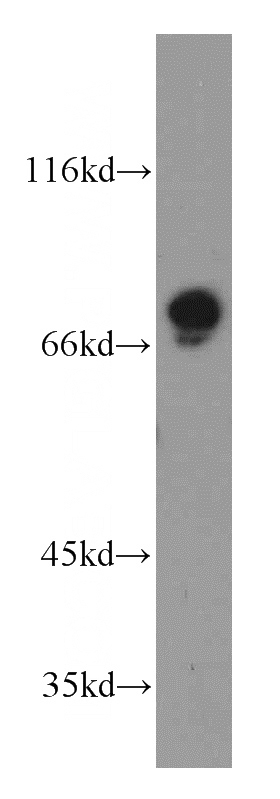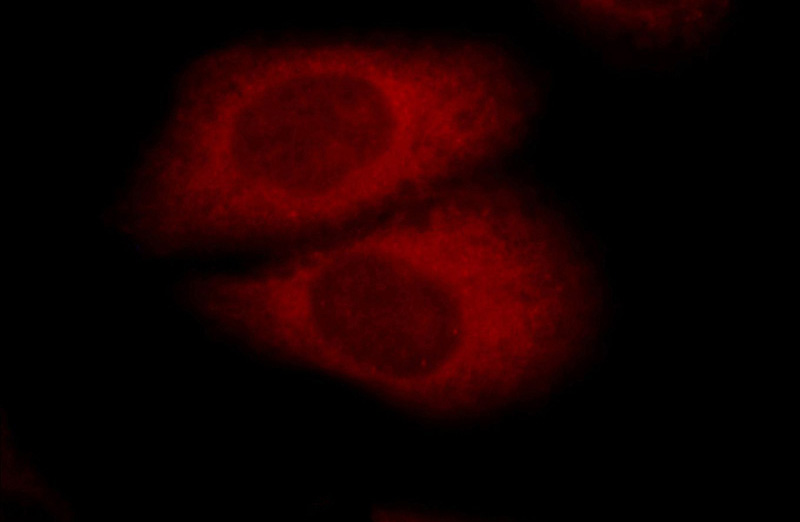-
Product Name
AGS3 antibody
- Documents
-
Description
AGS3 Rabbit Polyclonal antibody. Positive WB detected in HeLa cells, human brain tissue, mouse brain tissue, mouse testis tissue. Positive IHC detected in human lung cancer tissue. Positive IF detected in HepG2 cells. Observed molecular weight by Western-blot: 72 kDa
-
Tested applications
ELISA, IHC, IF, WB
-
Species reactivity
Human,Mouse,Rat; other species not tested.
-
Alternative names
AGS3 antibody; DKFZp727I051 antibody; GPSM1 antibody
-
Isotype
Rabbit IgG
-
Preparation
This antibody was obtained by immunization of AGS3 recombinant protein (Accession Number: BC017353). Purification method: Antigen affinity purified.
-
Clonality
Polyclonal
-
Formulation
PBS with 0.1% sodium azide and 50% glycerol pH 7.3.
-
Storage instructions
Store at -20℃. DO NOT ALIQUOT
-
Applications
Recommended Dilution:
WB: 1:200-1:2000
IHC: 1:20-1:200
IF: 1:10-1:100
-
Validations

HeLa cells were subjected to SDS PAGE followed by western blot with Catalog No:107837(GPSM1 antibody) at dilution of 1:600

Immunohistochemical of paraffin-embedded human lung cancer using Catalog No:107837(GPSM1 antibody) at dilution of 1:50 (under 10x lens)

Immunofluorescent analysis of HepG2 cells, using GPSM1 antibody Catalog No:107837 at 1:25 dilution and Rhodamine-labeled goat anti-rabbit IgG (red).
-
Background
GPSM1, also named as AGS3, is a receptor-independent G protein activator that has been implicated in multiple biological events such as brain development, neuroplasticity and addiction, cardiac function, Golgi structure/function, macroautophagy and metabolism. It contains seven tetratricopeptide repeats in its N-terminal half and four G-protein regulatory (GPR) motifs in its C-terminal half. It has been shown that AGS3 could regulate the orientation of the mitotic spindle, cAMP production, membrane protein transport, and asymmetric cell division by binding preferentially to inactive Gai/o subunits complexed with guanine dinucleotide phosphate (GDP) at multiple G-protein regulatory or GoLoco motif repeats. It also plays an important anti-apoptotic role through enhancing the phosphorylation of cyclic AMP response element-binding protein (p-CREB).
Related Products / Services
Please note: All products are "FOR RESEARCH USE ONLY AND ARE NOT INTENDED FOR DIAGNOSTIC OR THERAPEUTIC USE"
